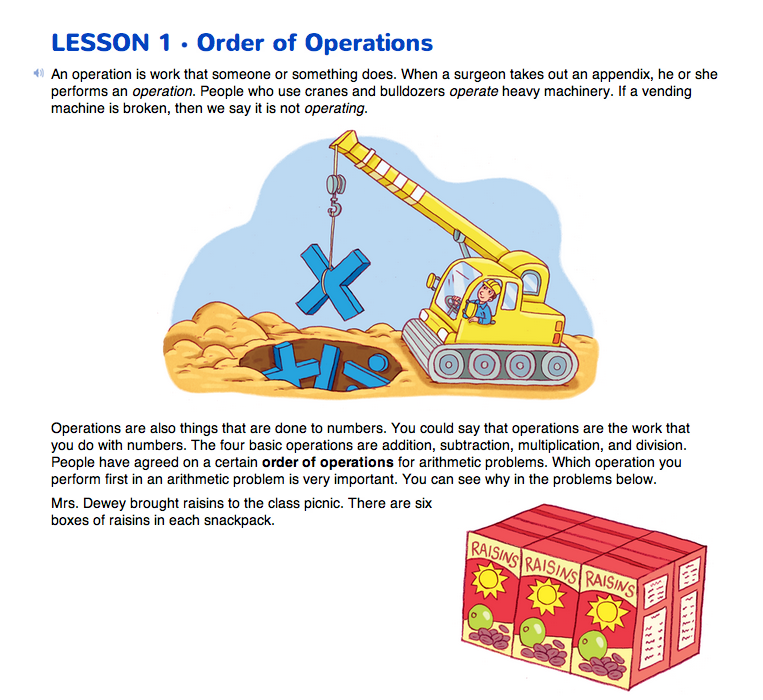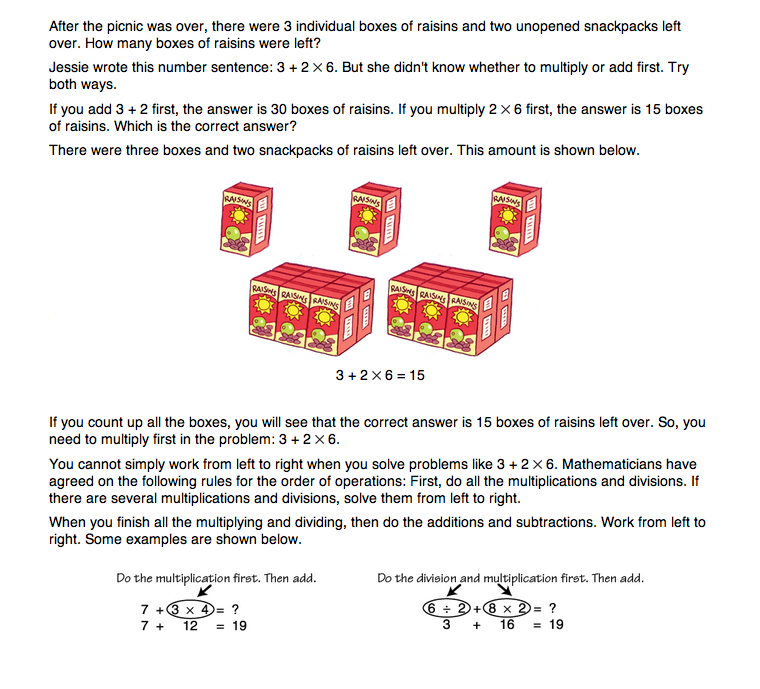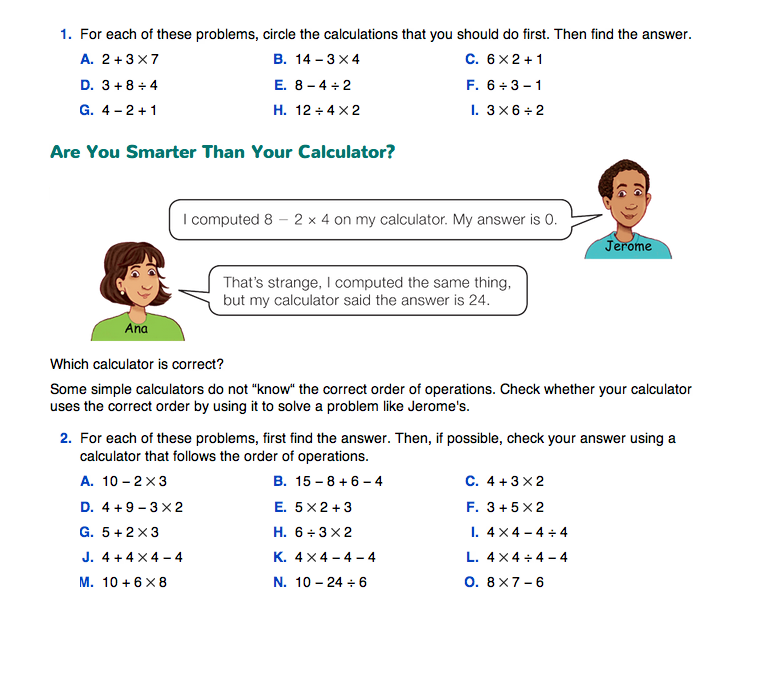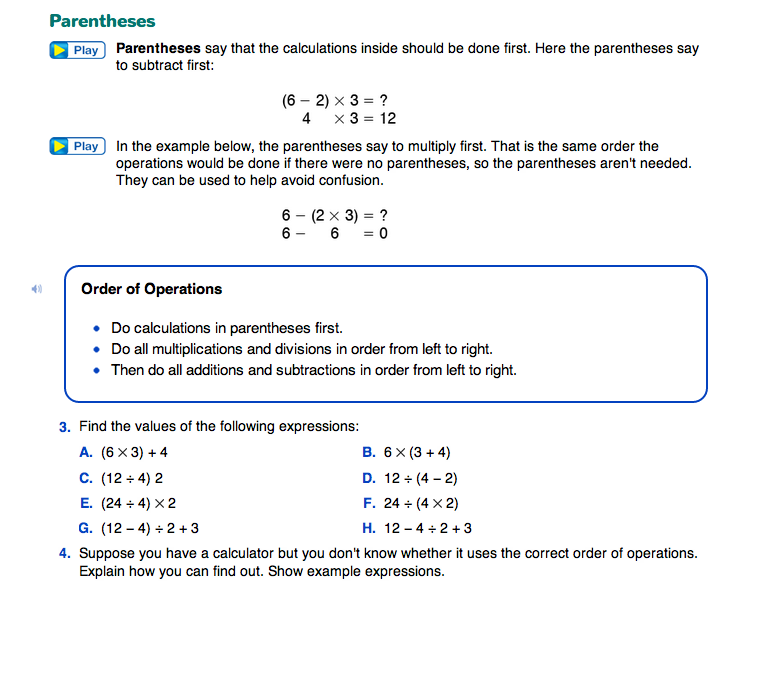Order of Operations
Est. Class Sessions: 2Developing the Lesson
Part 1. Order of Operations
Introduce Operations. Use the Order of Operations pages in the Student Guide to explain the order of operations.
These pages first introduce the meaning of the word “operation.” They show a problem, 3 + 2 × 6 = 15, that illustrates the need to agree on an order in which operations are performed. After reading about the order of operations rule, ask students to solve the problems in Question 1. In these problems, students should circle the calculations they will do first, then do the calculations. Note that in Question 1G, subtraction is done first. Since subtraction and addition have the same level in the order of operations, they are done from left to right. Similarly, division is done first in Question 1H and multiplication is done first in Question 1I. Since multiplication and division are at the same level in the order of operations, they are done from left to right.
Check Calculators. In the Are You Smarter Than Your Calculator? section in the Student Guide, Jerome and Ana get different answers using two different calculators. Students should check that the correct answer is 8 − 2 × 4 = 0, so Jerome's calculator is correct. Ana's calculator does not follow the correct order of operations. Ask students to check whether their own calculators follow the correct order. Do they get Jerome's answer or Ana's answer to 8 − 2 × 4?
Next, compare calculators that follow the order of operations with those that do not. If using actual calculators, hold up two calculators, one that uses the conventional order of operations and one that does not. Do not tell students which is which; they will figure this out. Write a problem on the board such as 6 − 3 × 2. Pass out the two calculators to two different students and have them solve this problem on the calculators by entering the following keystrokes:

Write the solutions the calculators give on the board. Calculators that follow the order of operations will give a solution of 0. Calculators that do not follow the order of operations will give a solution of 6.
Ask:
Explain that calculators that do not use the correct order of operations can still be useful—they just can't be trusted to do a string of calculations. Ask students to think about how to compute something like 3 − 12 × 4 on a calculator that does not use the conventional order of operations.
Ask:
Question 2 provides more practice with the order of operations and with calculations on calculators that use the correct order of operations. Assign the problems and be sure students predict what a calculator will show before they solve each problem.
Assign Home Practice Part 2 as in-class work or homework. Discuss student answers. In particular, ask about Question 1H. The single division operation in between two addition and subtraction operations seems to be confusing to some. Applying the order of operations correctly, the answer is 103.
100 − 49 ÷ 7 + 10 = 100 − 7 + 10 = 103
Use Parentheses. The Parentheses section in the Student Guide shows how parentheses can be used to clarify the order in which to do calculations. The calculations inside the parentheses are done first. In the first example in the Student Guide, (6 − 2) × 3, the parentheses say that the subtraction should be done first. This overrides the rule that multiplication is done first. In the second example, 6 − (2 × 3), the parentheses say that the multiplication should be done first. This agrees with the rule, so the parenthe- ses are not actually needed. They are sometimes included as a reminder, however. Suggest to students that the parentheses play a role similar to the circles they used earlier in the lesson, by showing how to group the calculations.
In Question 3 students solve problems that involve parentheses. Question 4 asks students to explain how they could find out whether a calculator uses the correct order of operations.

















